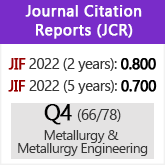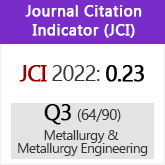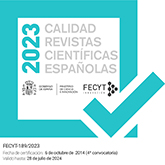Influence of TaC and NbC on the properties of M3/2 PM HSS
DOI:
https://doi.org/10.3989/revmetalm.2002.v38.i2.387Keywords:
High speed steels, Carbides, Powder metallurgy, Composite materials.Abstract
Metal matrix composites based on M3/2 high speed steel and reinforced with different percentages of NbC and TaC were manufactured following a conventional powder metallurgy route: mixing, compacting and sintering. Graphite, to compensate carbon losses during sintering, and copper-phosphorous, to promote liquid phase sintering, were added to M3/2 powders to constitute the base material. Carbide and base material powders were dry mixed and uniaxially compacted at 700 MPa. After this, vacuum sintering was carried out at two temperatures: 1190 °C and 1230 °C. The mechanical properties and wear behaviour of all sintered materials were examined, and their characterisation was completed with a broad microstructural study
Downloads
Download data is not yet available.
Downloads
Published
2002-04-30
How to Cite
Gordo, E., Velasco, E., Martínez, M. A., & Torralba, J. M. (2002). Influence of TaC and NbC on the properties of M3/2 PM HSS. Revista De Metalurgia, 38(2), 83–93. https://doi.org/10.3989/revmetalm.2002.v38.i2.387
Issue
Section
Articles
License
Copyright (c) 2002 Consejo Superior de Investigaciones Científicas (CSIC)

This work is licensed under a Creative Commons Attribution 4.0 International License.
© CSIC. Manuscripts published in both the printed and online versions of this Journal are the property of Consejo Superior de Investigaciones Científicas, and quoting this source is a requirement for any partial or full reproduction.All contents of this electronic edition, except where otherwise noted, are distributed under a “Creative Commons Attribution 4.0 International” (CC BY 4.0) License. You may read here the basic information and the legal text of the license. The indication of the CC BY 4.0 License must be expressly stated in this way when necessary.
Self-archiving in repositories, personal webpages or similar, of any version other than the published by the Editor, is not allowed.

















